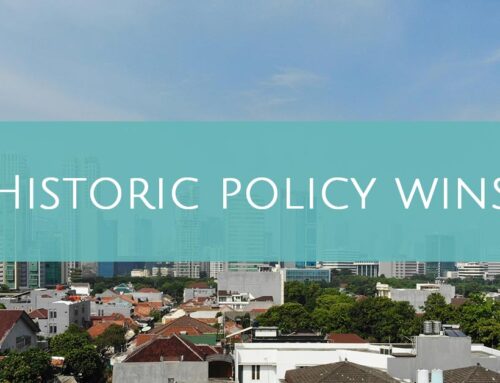“SMART BAHGS” for Policy Makers: How to Build up a Credible S.O.S?
 PETER GRAHAM | GLOBAL, 全球, SOUTH-EAST ASIA, SOUTH-EAST ASIA
PETER GRAHAM | GLOBAL, 全球, SOUTH-EAST ASIA, SOUTH-EAST ASIA
What level of ambition should we have in supporting policies that achieve CO2 emission reductions from buildings? What we can we do together that can harness Speed and Opportunity to go to Scale (S.O.S)?

These questions were one of the undercurrents of the GBPN’s Building Sector Symposium in Paris last month. Given the challenges we face in supporting policy and market transformations that can mainstream energy efficiency, our goal was to address this issue together: how to help the building sector achieve the deep energy savings required to limit global warming to a +2degC range?
Some of the discussions then focused on how we should navigate the territory between the goals considered ‘S.M.A.R.T.’ (specific, measurable, attainable, relevant and time-bound) and ‘B.A.H.G’s (big, audacious, and hairy) without bringing us to the edge of our credibility.

Considering that making a respectable contribution to achieving the +2degC goal requires reducing energy related CO2 emissions to 25% below business as usual projections in 2020 and 50% below projections by 2030*, perhaps we should be careful in how we define what is ‘credible’. Barriers should not define our goals.
The priorities that emerged from the working sessions represented a spectrum of possibilities for implementable and aspirational collaboration and aligned work for 2014 and beyond. At the SMART end of the spectrum came ideas for improving compliance with building codes for new build and retrofitting, including helping policy-makers identify and adapt best practice tools for code compliance and enforcement. Enabling the improvement of codes and audacious goal setting require improving the availability, accessibility and quality of building performance data. The data workshop generated some great ideas including establishing an open linked data platform, working with jurisdictions to identify & map data needs, sharing best-practices in data gathering, organisation and analysis, and developing better tools for data capture, representation and comparisons.
One of the biggest BAHGs generated during the symposium was trying to achieve 1 billion Square Meters of net positive energy building by 2030. While many admired the ambition, some questioned the credibility of such an initiative. Hairy as it may be, sometimes radical goals need to be pursued in SMART ways to catalyse transformational change. And it seems the GBPN symposium was not the only high-level gathering on climate policy that came to the same conclusion. The Business for the Environment (B4E) Climate Summit also held during the last week of May in London set out to reframe the sustainability debate and push for new ‘Net Zero, Climate Positive’ business models.
While the goal of net positive energy may well be ‘Big, Audacious and Hairy’ – it seems to be gaining wider support. The GBPN and our partners are indeed converging on a new range of SMART BAHGs for policy makers (perhaps a fitting outcome for a Parisienne meeting).
*Buildings for our Future: Closing the Emissions Gap in the Building Sector – GBPN & KPMG, June 2013
Related News
Related Report Bundles
Share This Story, Choose Your Platform!
Stay in touch with how we’re transforming the buildings sector
GBPN runs innovative building policy reform programs in key regions around the world that aim to tackle the climate emergency by decarbonising the buildings sector. Stay up to date with our newsletter.
Stay in touch with how we’re transforming the buildings sector
GBPN runs innovative building policy reform programs in key regions around the world that aim to tackle the climate emergency by decarbonising the buildings sector. Stay up to date with our newsletter.






